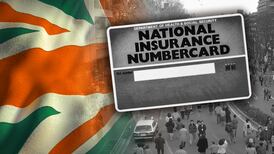Jennifer Lauren, niece of the fashion designer Ralph Lauren, attracted much embarrassing publicity for her mid-air outburst and subsequent arrest at Shannon Airport this week. But air rage is not the preserve of people with moneyed backgrounds and famous names.
According to Caitriona Carmody of Carmody & Company Solicitors, the firm that initially represented Lauren, passengers charged in air-rage incidents come from a “wide spectrum” of the general public. What most of them do have in common, she says, is the consumption of alcohol; in fact, in most reported cases of air rage, alcohol is a primary factor, whether taken on its own or – as in Lauren’s case – mixed with other substances.
Carmody’s firm sees about “two or three” such cases a year. In fact, Ennis-based firms are well placed to represent people charged with air rage, as Shannon Airport is a popular landing spot for flights dealing with unruly passengers.
As the westernmost major airport in Europe, it is the last stop before crossing the Atlantic; it also has the longest runway in Ireland and is surrounded by marsh and an estuary – useful features should an emergency landing be necessary for technical reasons.
According to the International Air Transport Association (Iata), the trade group for the world’s biggest airlines, more than 15,000 incidents of unruly passengers were reported between 2007 and 2011, with “almost certainly many more which we never hear about”. During that period the number of incidents reported increased from 500 to more than 6,000. (No figures are available for 2012 or 2013.)
But while Iata’s figures appear alarming, they ignore some important context. The parameters of what constitutes “unruly” behaviour on a flight have tightened since 9/11. Beefed-up security protocols meant flight crews adopted a zero-tolerance attitude to any kind of disruption, and the line between justifiable anger and air rage became blurred.
If you referred to the airline food as “muck on a tray” or overcomplained about a steward’s insistence that your hand luggage was too big to fit in the overhead compartment, you risked being accused of “interfering with the flight crew’s duties”.
It is difficult to get figures of how many passengers are actually forcibly removed from a plane and formally charged. The European Aviation Safety Association doesn't release exact numbers; nor does the Irish Aviation Authority, which records incidents that occur in Irish air space based on information given by the air-traffic-management confidential occurrence-reporting system. The airlines themselves are even more tight-lipped: Aer Lingus would say only that those types of incidents "are extremely rare"; Ryanair, Europe's largest carrier, says it doesn't even compile such statistics.
And air-rage events that result in a passenger being forcibly removed and charged are rare. More than 1.5 billion commercial passengers take to the skies annually; European skies hosted 800 million of them in 2013. Most have hassle-free experiences, but, according to a report filed in May 2012 with the International Civil Aviation Organisation, “it is clear that the instances of unruly and disruptive behaviour on board aircraft are evolving in nature and they are increasing steadily and consistently.”
Stressful experience
Flying is an inherently stressful experience. The aviation journalist Gerry Byrne likens a flight to "an escalating emotional roller coaster" in which the possibility of an extreme reaction is increased due to a variety of alienating factors: the long queues; the heightened security; baggage restrictions; and, for some airlines, the rush to get a seat. And the air, pressurised up to 10,000ft, doesn't help: sitting on a plane is a less energetic version of standing atop an Alpine peak.
It's a high-risk experiment in group dynamics, according to Angela Dahlberg, author of Air Rage: The Underestimated Safety Risk. Cabin crews are dealing with a group of people who've experienced a degree of stress before getting on the aircraft. Up to half are nervous or fearful flyers. Some have a history of aggressive behaviour. Some are on medication, whose effects are magnified by the consumption of alcohol, which itself is more potent in a pressurised cabin.
By Dahlberg’s reckoning, a closed aircraft is an emotional pressure cooker that tests the nerves of the passengers and the skills of the cabin crew. Yet economic realities mean that most airlines have had to figure out new ways to keep costs down. Experienced staff well-trained in conflict resolution are one of those costs.
Andrew Thomas, the author of Air Rage: Crisis in the Skies, believes that "there is no question the cattle-class experience has contributed to the rise and intensity of air-rage incidents all over the world. More people in a smaller space experiencing a naturally stressful environment will trigger different reactions in some folks, and a number will be violent."
Enraged and inebriated: it’s a recipe for trouble, as Jennifer Lauren found out.

















